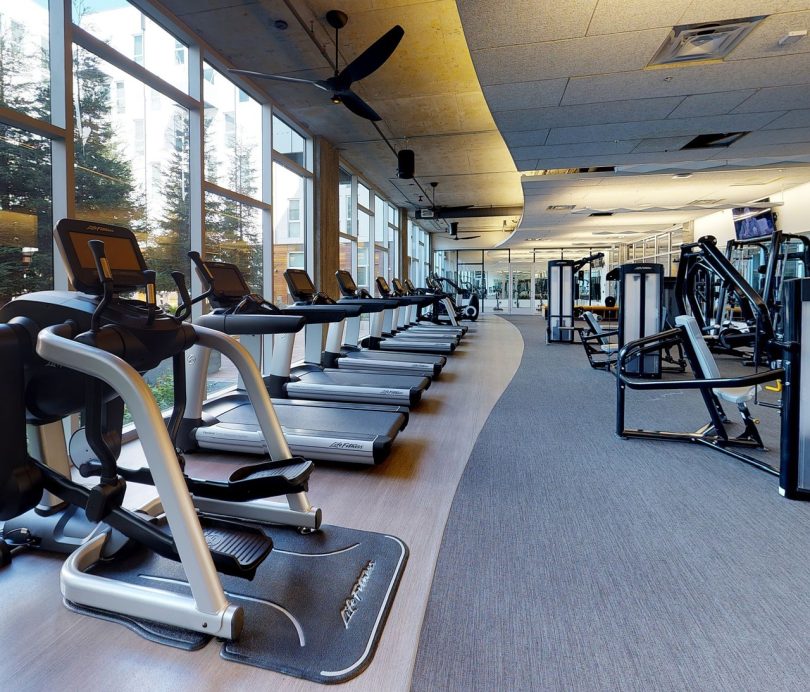Foam rolling has become increasingly popular in the fitness world, and for good reason. Whether you’re an athlete looking to improve your performance or someone seeking relief from muscle tension and tightness, foam rolling can be a game-changer. In this ultimate guide, we will unravel the mysteries of fascia, explore the benefits of foam rolling, and provide you with practical techniques to target different areas of your body.
Unraveling the Mysteries of Fascia
Before we dive into foam rolling techniques, it’s essential to understand the importance of fascia in the body. Fascia is a connective tissue that surrounds and supports our muscles, bones, and organs. It plays a vital role in maintaining structural integrity and allowing for smooth movement. However, due to various factors like repetitive movements or poor posture, fascia can become tight and restricted, leading to discomfort and limited flexibility.
Now, let’s delve deeper into the fascinating world of fascia. Think of fascia as a spiderweb that runs throughout your entire body. It connects everything together and provides stability. It’s like a network of interconnected tissues that wrap around muscles, organs, and bones, creating a seamless web of support.
When fascia is healthy and functioning optimally, it allows for unrestricted movement and flexibility. It acts as a shock absorber, protecting our muscles and organs from impact and providing a cushioning effect. However, when fascia becomes tight and restricted, it can cause a myriad of issues.
Imagine a spiderweb that has been pulled too tight. It loses its elasticity and becomes stiff and rigid. Similarly, when fascia becomes tight, it can restrict muscle movement, leading to pain, discomfort, and limited range of motion. This can have a significant impact on our daily activities, athletic performance, and overall well-being.
Understanding the Importance of Fascia in the Body
Now that we have a better understanding of what fascia is and its role in the body, let’s explore why it’s essential to prioritize its health. Fascia is not just a passive tissue; it is an active player in our overall well-being.
One of the key functions of fascia is to provide structural support. It wraps around our muscles, bones, and organs, holding everything in place. Without fascia, our bodies would lack the necessary stability to perform even the simplest of movements.
Additionally, fascia plays a crucial role in proprioception, which is our body’s ability to sense its position in space. Proprioception allows us to have a sense of where our body parts are without having to look at them. Fascia contains numerous sensory receptors that provide feedback to our brain, helping us maintain balance, coordination, and spatial awareness.
Furthermore, fascia is involved in the transmission of force throughout the body. When we engage in physical activities like running, jumping, or lifting weights, our muscles generate force that needs to be distributed efficiently. Fascia acts as a transmission system, spreading the force generated by our muscles and allowing for smooth and coordinated movement.
However, when fascia becomes tight and restricted, its ability to perform these functions is compromised. The spiderweb-like network becomes tangled and constricted, hindering the flow of energy and movement. This can lead to imbalances, compensations, and ultimately, pain and discomfort.
Now that we have a comprehensive understanding of the importance of fascia in the body, let’s explore how foam rolling can help release tension and restore optimal fascial health.
Preparing for an Effective Foam Rolling Session
Before jumping into foam rolling exercises, it’s important to have the right equipment. A high-quality foam roller is a must-have. Look for one that is firm enough to provide adequate pressure but not too hard to cause discomfort. Additionally, consider using a lacrosse ball or massage balls for targeted pressure release.
When it comes to foam rolling, having the right equipment can make all the difference. A high-quality foam roller is essential for an effective session. It should be firm enough to provide adequate pressure on your muscles, but not too hard that it causes discomfort. The right foam roller will help you target specific muscle groups and release tension.
In addition to a foam roller, you may also want to consider using a lacrosse ball or massage balls. These smaller tools can be used to target specific areas of tightness or knots in your muscles. The lacrosse ball, with its firmness and size, can provide deep pressure release, while the massage balls offer a more gentle approach. Having these tools on hand will allow you to customize your foam rolling session to meet your specific needs.
Essential Equipment for Foam Rolling Exercises
- A high-quality foam roller
- Lacrosse ball or massage balls
Investing in high-quality equipment is crucial for a successful foam rolling session. A foam roller that is made with durable materials will last longer and provide better support for your body. Look for a foam roller that has a textured surface, as this can enhance the effectiveness of your exercises by targeting deeper layers of muscle tissue.
When choosing a lacrosse ball or massage balls, consider the size and firmness that will work best for you. A lacrosse ball is small and dense, making it ideal for targeting specific trigger points. Massage balls, on the other hand, come in various sizes and textures, allowing you to experiment and find the perfect fit for your needs.
Remember, the right equipment is just the beginning. It’s important to approach foam rolling with proper technique and knowledge. Take the time to learn different foam rolling exercises and understand which muscles they target. This will help you create a well-rounded foam rolling routine that addresses your specific areas of tension and promotes overall muscle health.
So, before you dive into your next foam rolling session, make sure you have the essential equipment: a high-quality foam roller, a lacrosse ball or massage balls. With the right tools and knowledge, you’ll be able to maximize the benefits of foam rolling and take your muscle recovery to the next level.
Rock and Roll: Mastering Foam Rolling Techniques
Now that you have the necessary equipment, let’s dive into the techniques that will help you get the most out of your foam rolling sessions.
Finding the Right Amount of Pressure for Effective Foam Rolling
When foam rolling, it’s crucial to find the right amount of pressure. You should feel a moderate amount of discomfort without causing sharp pain. Start with slow, controlled movements, and gradually increase the intensity as your muscles begin to relax.
One important aspect of finding the right amount of pressure is understanding your body’s limits. Each individual has a different tolerance for discomfort, so it’s essential to listen to your body and adjust accordingly. If you’re new to foam rolling, start with lighter pressure and gradually work your way up.
Another factor to consider is the specific muscle group you’re targeting. Some areas of the body, such as the calves or IT band, may require more pressure to effectively release tension. Conversely, more sensitive areas like the neck or lower back may require gentler pressure. Experiment with different levels of intensity to find what works best for each muscle group.
It’s also important to note that the amount of pressure needed can vary depending on your level of muscle tightness or soreness. If you’re feeling particularly tight or sore, you may need to apply more pressure to effectively release tension. On the other hand, if you’re already quite loose and relaxed, you may not need as much pressure.
When applying pressure, focus on using your body weight rather than relying solely on your arms or hands. This will help distribute the pressure evenly and prevent strain on your upper body. By using your body weight, you can also maintain a more relaxed and controlled movement, allowing for a more effective foam rolling session.
Remember, foam rolling is not meant to be a painful experience. While you may feel discomfort, it should never be unbearable or cause sharp pain. If you experience any sharp or intense pain, stop immediately and consult with a healthcare professional.
Releasing Tension in the Upper Body with Foam Rolling
Our upper body often bears the brunt of our daily activities, leading to tension and discomfort. Foam rolling can provide much-needed relief in various areas.
Did you know that foam rolling is not only beneficial for athletes and fitness enthusiasts, but also for individuals who spend long hours sitting at a desk? The repetitive motions and poor posture associated with desk work can cause tightness and discomfort in the upper body. Fortunately, foam rolling can help alleviate these issues.
Relieving Upper Back Tension with Foam Rolling
Sitting at a desk all day or engaging in repetitive motions can lead to tightness in the upper back. Place the foam roller perpendicular to your spine and gently roll up and down. Focus on any tender spots and spend extra time on those areas to release tension.
Imagine the relief you will feel as the foam roller glides along your upper back, targeting those knots and tight muscles. By incorporating foam rolling into your daily routine, you can effectively alleviate upper back tension and improve your overall well-being.
Soothing Lower Back Pain with Foam Rolling
Lower back pain is a common issue for many individuals. To alleviate discomfort, place the foam roller under your lower back while lying on the floor. Slowly roll up and down, paying attention to any areas that feel tight or sore.
Did you know that foam rolling can also help improve your posture? By targeting the muscles in your lower back, foam rolling can release tension and promote proper alignment. Say goodbye to lower back pain and hello to a healthier, pain-free lifestyle.
Opening Up the Chest with Foam Rolling
Poor posture and desk work often cause tightness in the chest muscles. Lie face down with the foam roller positioned horizontally beneath your chest. Roll from side to side, allowing the roller to massage the muscles in your chest and shoulders.
As you roll back and forth, imagine the release of tension in your chest muscles. The foam roller acts as a massage therapist, kneading away the tightness and promoting better posture. Incorporating this simple technique into your routine can lead to improved flexibility and reduced discomfort in your upper body.
Loosening Up the Lats with Foam Rolling
The latissimus dorsi, or lats, are large muscles located on either side of your back. Engaging in activities like weightlifting or rowing can cause tightness in these muscles. Lie on your side with the foam roller positioned beneath your armpit. Roll up and down, targeting the lats on each side.
Imagine the relief you will feel as the foam roller applies gentle pressure to your tight lats. By incorporating foam rolling into your fitness routine, you can enhance your performance, prevent injuries, and experience greater comfort in your daily activities.
Relieving Tricep Tension with Foam Rolling
If you experience tightness in your triceps, foam rolling can provide relief. Position the foam roller horizontally beneath your triceps and roll up and down. You can adjust the pressure by applying more or less body weight.
As you roll your triceps along the foam roller, you can feel the knots and tension being released. Foam rolling not only helps to alleviate tricep tightness, but it also promotes blood circulation and aids in muscle recovery. Incorporate this simple technique into your post-workout routine for optimal results.
Easing Back Pain with Foam Rolling
Back pain is a common complaint for many people. Foam rolling can help alleviate discomfort by targeting the muscles in your back. Position the foam roller under your mid-back and roll up and down, focusing on any areas of tightness or discomfort.
Imagine the relief you will experience as the foam roller glides along your back, providing a deep tissue massage. By incorporating foam rolling into your daily routine, you can effectively alleviate back pain, improve flexibility, and enhance your overall quality of life.
Targeting the Lower Body with Foam Rolling
The lower body is constantly subjected to stress and strain. Foam rolling can be particularly beneficial for relieving tension in the lower body muscles.
Alleviating Shin Pain with Foam Rolling
If you’re a runner or engage in activities that put stress on your shins, foam rolling can help alleviate discomfort. Position the foam roller beneath your shins and roll back and forth, focusing on any tender spots.
Relieving Tension in the Adductors with Foam Rolling
The adductors are the muscles on the inside of your thighs. Tightness in these muscles can lead to hip and groin pain. To release tension, position the foam roller beneath your inner thigh and roll back and forth, targeting any areas of tightness.
By incorporating foam rolling into your fitness routine, you can experience a relaxed and flexible body. Remember to start with light pressure and gradually increase intensity as your muscles adapt. With regular practice, you’ll reap the benefits of foam rolling and enjoy improved mobility and overall well-being.








